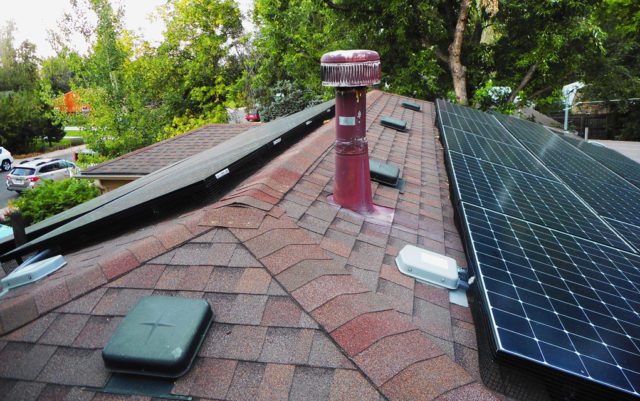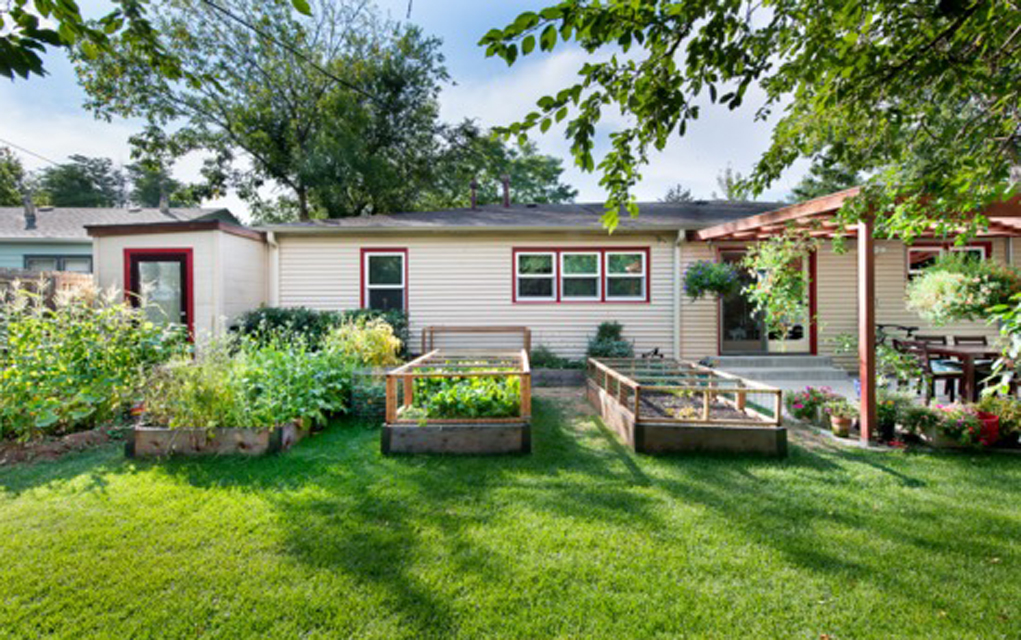
When the Fourmile Canyon fire destroyed David and Emily Takahashi’s home in 2010, they had no idea that they were starting down a long and fruitful path to sustainable living. They lost almost everything except for each other, but from the ashes of that disaster a new energy independent home was born.
In the aftermath of the fire, they moved into a 60-year-old home in Boulder’s Martin Acres. Built in 1954, it was, though beautiful, no model of energy efficiency. It depended completely on the grid, leaked heat and ran on inefficient appliances. It was like an old ship, and in light of the increasingly urgent climate situation, they decided it was their duty to environmentally renovate it.
“A lot of people do this work and they’re thinking, ‘How do I save money?’” David says. “But for us, the end game was always, ‘How do we set ourselves up like a boat on the ocean?’”
But where to begin? The question was almost paralyzing in scope, he says. So they started with what they had.
In October 2015 they hired Green Tracks Colorado to do an energy audit on their home. They wanted to set a baseline against which they could measure their improvement and their distance along the path to energy efficiency.
“The energy audit is essential,” David says. “It sets your limitations, priorities and timelines.”
That audit revealed that their Home Energy Rating System (HERS) score was 190. Developed by the Residential Energy Services Network (RESNET), the HERS index is the nationally recognized system for calculating a home’s energy performance and measures a building’s energy efficiency. A house with a HERS score of about 100 meets most current industry standards for energy efficiency, while a score of 150 means a house is operating 50 percent less efficient than the current standard.
To David and Emily, a HERS score of 190 was simply unacceptable. So, they resolved to reduce it.
That was when the real work began.
“Check this out,” David says, unzipping a black nylon case and removing a small gun-like object, “This is the real deal.” He points it at the nearest wall and an infrared image pops up on the display, showing the temperature difference between his kitchen window and the wall beside it. “This came in very useful when we were closing up all the seams.”
This was the first order of business: they had to seal up the house. The Takahashis realized they were losing a lot of energy through single-panel windows, improperly sealed doors and attic fans.
Using his trusty infrared detector, David insulated their home one seam at a time, one triple panel window after the next, laying plastic down over the crawlspace gravel and replacing their conventional leaky attic fans with a “quiet, self-insulating whole house attic fan.”
With the existing ductwork, they also replaced their old, inefficient gas furnace with air source heat pumps, taking them one step closer to total efficiency.
“Our last natural gas consumer in the house was our hot water heater,” David says. But the Takahashis were eager to get rid of their natural gas line — it was a thorn in the side of their increasingly efficient home, and it needed to go.

Without hesitation they replaced their water heater with another air source heat pump. They also opted to pay more for wind-generated electricity. And just like that, on a crisp day in January 2017, their HERS score didn’t just meet the standard of 100, it officially hit net-zero.
“That was a really happy day,” David recalls. “We called Xcel up and said, ‘Please come take your natural gas line away, we don’t want it anymore.’”
With their consumption of natural gas energy terminated, they eagerly turned their eyes to the production side of things. How could they start generating their own, sustainably sourced energy, David wondered.
He began calculating the solar potential for their home — measuring the roof area, trimming back some of the trees that blocked direct sunlight, and researching solar panel systems that could both generate energy, store energy and even, if there was ever an excess of it, sell it back to the grid.
It took over a year to install (largely because of permitting logistics) but when the solar panels were all up and independently working, that’s when David and Emily began to feel fully autonomous, completely untethered from the grid.
“Our HERS score went from 190, to zero, to minus-15, to minus-50,” David describes. “We’re now a net-positive household.”
And that feels really good, both David and Emily agree. It may not have been the easiest or the cheapest endeavor, but it gave them complete energy independence. And that in itself, David says, was well worth the effort.
Their boat is now floating all on its own.














